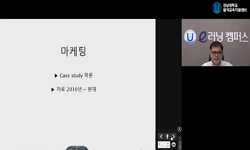The purpose of this study was to segment consumers based on sales promotion orientation and examine the differences between the consumer segments on shopping styles and demographics. A total of 462 responses collected from a questionnaire survey to su...
http://chineseinput.net/에서 pinyin(병음)방식으로 중국어를 변환할 수 있습니다.
변환된 중국어를 복사하여 사용하시면 됩니다.
- 中文 을 입력하시려면 zhongwen을 입력하시고 space를누르시면됩니다.
- 北京 을 입력하시려면 beijing을 입력하시고 space를 누르시면 됩니다.


판촉지향성과 쇼핑스타일 : 소비자유형별 분석을 통한 시장세분화 접근 A Typological Approach for Consumer Segmentation = Sales Promotion Orientation and Shopping Styles
한글로보기https://www.riss.kr/link?id=A40056040
- 저자
- 발행기관
- 학술지명
- 권호사항
-
발행연도
2003
-
작성언어
Korean
- 주제어
-
KDC
592.04
-
등재정보
KCI등재,SCOPUS
-
자료형태
학술저널
-
수록면
654-664(11쪽)
- 제공처
- 소장기관
-
0
상세조회 -
0
다운로드
부가정보
다국어 초록 (Multilingual Abstract)
The purpose of this study was to segment consumers based on sales promotion orientation and examine the differences between the consumer segments on shopping styles and demographics. A total of 462 responses collected from a questionnaire survey to subjects aged over 20 were analyzed. Cluster analysis on sales promotion identified four groups including rational group(21%), active group(28%), insensitive group(22.1%), and interest group(28.9%) of sales promotion. MANOVA, ANOVA and x²-test revealed significant differences among the four groups on shopping styles(high-quality prone, value prone, price prone, brand prone, fashion prone, hedonic shopping prone, and loyalty) and 4 demographic characteristics(i.e., age, marital status, occupation, and education). The rational group showed lower brand proneness than did other groups while the active group showed higher price and brand proneness. The interest group showed high value, brand, and hedonic shopping proneness while the insensitive group was the least engaged in shopping styles. The study developed a profile of each segment and provided marketing implications.
동일학술지(권/호) 다른 논문
-
혜택세분화에 따른 20대 여성의 니트웨어 구매행동에 관한 연구
- 한국의류학회
- 이옥희
- 2003
- KCI등재,SCOPUS
-
어머니의 양육태도가 학령기 아동의 의복성향과 의복구매행동에 미치는 영향
- 한국의류학회
- 김미선
- 2003
- KCI등재,SCOPUS
-
- 한국의류학회
- 김수현
- 2003
- KCI등재,SCOPUS
-
- 한국의류학회
- 박경애
- 2003
- KCI등재,SCOPUS




 ScienceON
ScienceON KISS
KISS







